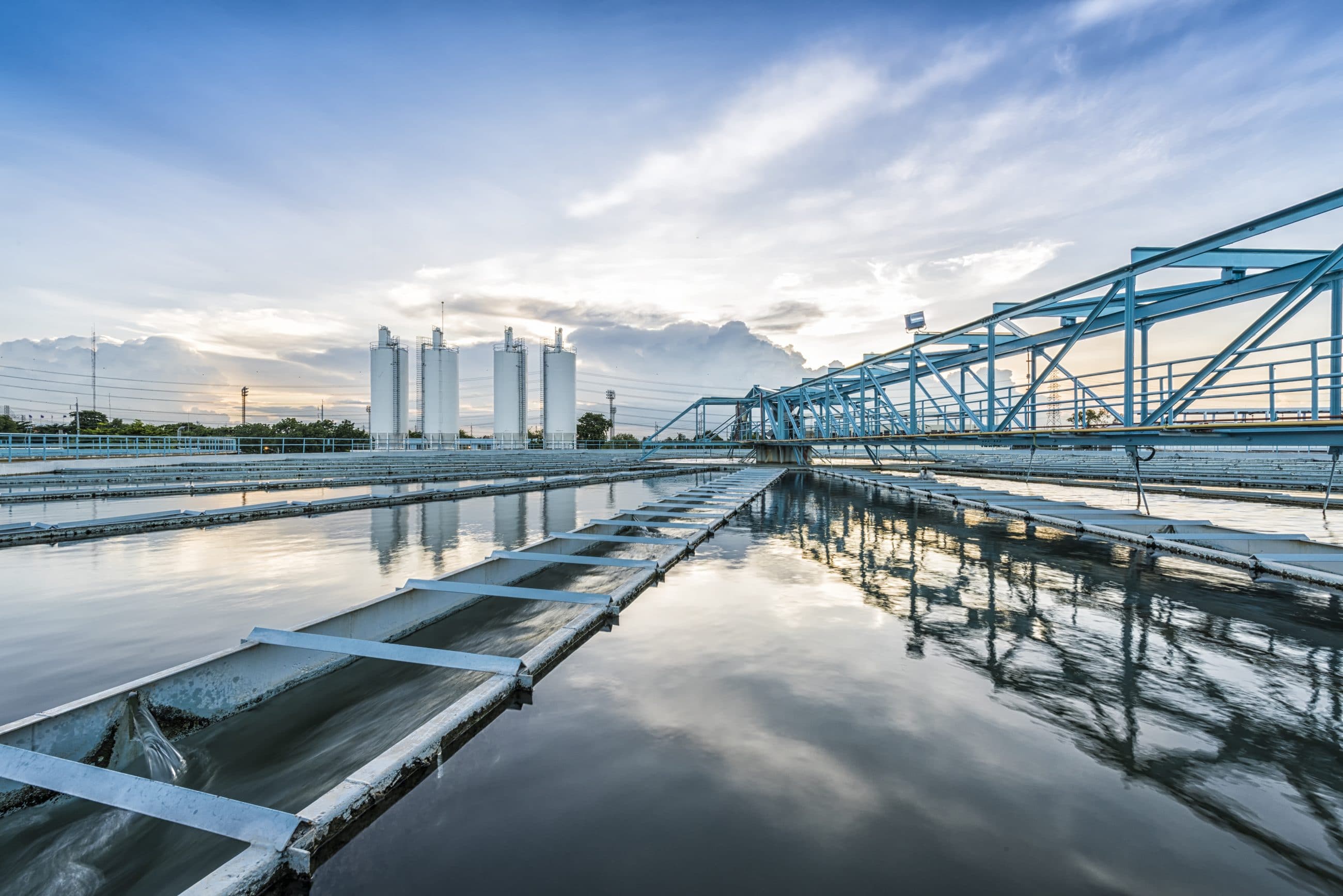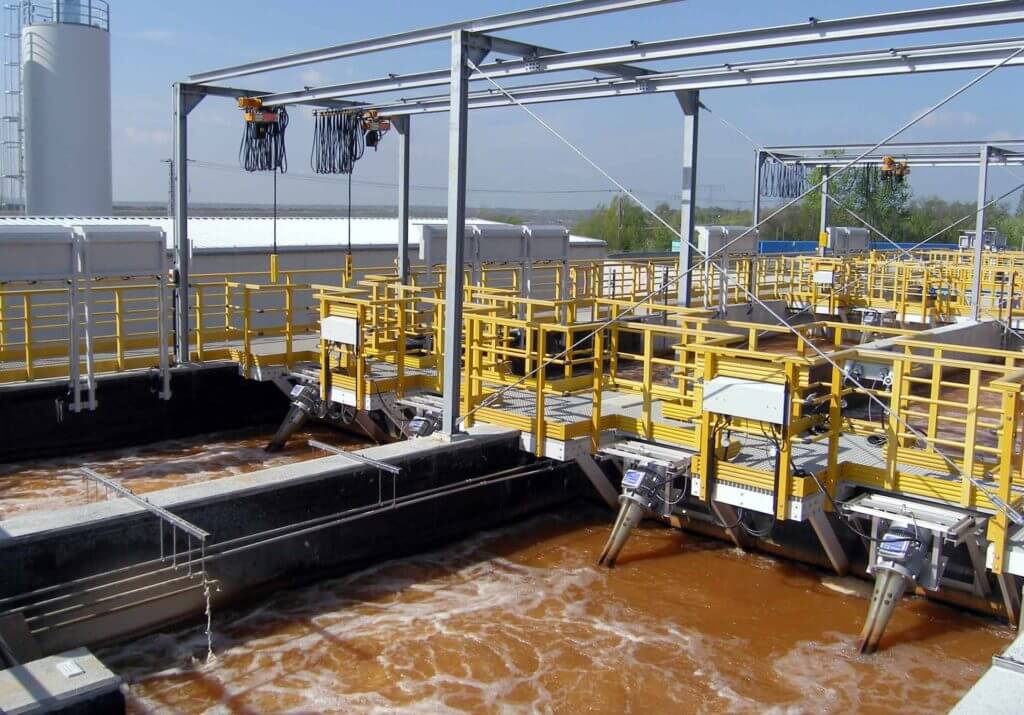Industrial Waste Water Treatment-- Cutting-Edge Technologies for Water Filtration
Industrial Waste Water Treatment-- Cutting-Edge Technologies for Water Filtration
Blog Article
Innovations and Breakthroughs in Hazardous Waste Water Treatment Technologies
The landscape of commercial wastewater treatment is undergoing a transformative change, driven by advancements that improve both performance and sustainability. Arising modern technologies, such as membrane layer bioreactors and microbial gas cells, are redefining pollutant removal processes while adding to energy generation. Additionally, resource recovery techniques are getting traction, lining up with circular economic situation principles. As regulatory criteria evolve, the assimilation of AI and artificial intelligence into wastewater monitoring systems guarantees to make sure and enhance operations conformity. Nevertheless, the complete implications of these advancements elevate essential concerns regarding their scalability and lasting effect on market techniques.
Summary of Drainage Treatment Technologies
Wastewater therapy innovations include a variety of techniques designed to eliminate pollutants from industrial effluents prior to their release right into the atmosphere. These technologies are essential for maintaining eco-friendly equilibrium and making certain compliance with ecological regulations. The key classifications of wastewater treatment include physical, chemical, and organic techniques, each offering distinct functions based upon the nature of the impurities present.

Biological therapy techniques employ microbes to weaken organic matter, making them specifically effective for organic-rich effluents. Techniques like activated sludge and biofilm activators harness the natural destruction abilities of microorganisms, causing substantial reductions in biochemical oxygen need (BODY)
Advanced Purification Techniques
Advanced filtering strategies represent an essential evolution in the world of commercial wastewater treatment, boosting the performance of contaminant elimination procedures. Industrial Waste Water Treatment. These approaches include a series of innovations, including microfiltration, ultrafiltration, nanofiltration, and turn around osmosis, which provide sequential barriers for various bit sizes and chemical structures
Microfiltration and ultrafiltration make use of membrane layer systems to remove suspended solids, bacteria, and bigger organic particles, improving the top quality of effluent before more treatment. Nanofiltration bridges the void between ultrafiltration and turn around osmosis, properly removing divalent ions and natural compounds, hence reducing the lots on downstream processes.
Reverse osmosis provides the highest degree of purification by allowing just water and little molecules to pass via its semi-permeable membranes, making it suitable for redeeming high-quality water from commercial effluents. Recent improvements in membrane modern technology, including the growth of more long lasting and fouling-resistant materials, have actually substantially improved functional efficiency and decreased expenses.
Incorporating these advanced filtration techniques not only boosts the overall therapy procedure however additionally adds to sustainability initiatives by allowing water reuse and source recovery in industrial settings. (Industrial Waste Water Treatment)
Organic Therapy Advancements

Moreover, the advancement of crafted organic systems, such as membrane bioreactors (MBRs), incorporates biological therapy with innovative membrane layer purification. This integration permits higher effluent top quality and decreased footprint, making it appropriate for space-constrained industrial centers. Technologies in genetically engineered microbes have actually also emerged, enhancing the biodegradation of specific pollutants, such as pharmaceuticals and hefty metals, that are commonly challenging to remove.
Additionally, the application of bioaugmentation methods, where helpful microbes are presented to enhance the existing biological therapy procedures, has revealed encouraging lead to boosting treatment performance. These technologies collectively symbolize a trend in the direction of even more effective and sustainable organic treatment methodologies that can adapt to the evolving intricacies of commercial wastewater streams. As industries remain to prioritize environmental compliance, these organic advancements will certainly play an essential role in wastewater management.

Source Healing Techniques
In industrial setups, the integration of resource recuperation techniques has actually ended up being progressively essential for improving sustainability and minimizing waste. These techniques concentrate on removing useful products and energy from wastewater streams, thereby changing possible pollutants into reusable sources.
One noticeable technique is vitamins and mineral recovery, where nitrogen and phosphorus, commonly present in excess in wastewater, are recorded and transformed right into plant foods. This not only lowers environmental effects yet additionally gives a circular economic climate service for agricultural applications. Additionally, innovations such as anaerobic food digestion enable for the conversion of organic waste right into biogas, a sustainable energy resource that can balance out nonrenewable fuel source usage in industrial operations.
Furthermore, progressed filtration and membrane innovations help with the recuperation of commercial byproducts such as steels and salts. These recuperated products can be rehabilitated into manufacturing processes, decreasing the need for virgin resources.
Future Trends in Waste Water Management
As markets significantly prioritize sustainability, the future of wastewater administration is readied to undergo substantial improvements. Technological advancements, such click over here as man-made intelligence and device understanding, will enable much more reliable surveillance and management of wastewater systems. These modern technologies can predict maintenance requirements, maximize therapy procedures, and boost decision-making, ultimately decreasing operational expenses and ecological impact.
Furthermore, the combination of round economy concepts will play an essential role in wastewater management. Industries are anticipated to move towards systems that not only treat wastewater yet additionally recuperate useful resources, such as nutrients, water, and energy. This shift will certainly reduce waste and promote the reuse of products, straightening with international sustainability objectives.
Emerging therapy methods, such as membrane layer bioreactors and advanced oxidation processes, will certainly further improve the efficiency of wastewater therapy, allowing for better effluents appropriate for reuse. Additionally, governing frameworks are her latest blog likely to progress, highlighting more stringent standards for wastewater discharge and encouraging markets to embrace ingenious therapy solutions.
Conclusion
In verdict, the advancement of industrial wastewater therapy technologies shows a substantial change towards enhanced efficiency and sustainability. Advancements in innovative filtering strategies, organic treatments, and resource healing methods highlight the market's commitment to ecological stewardship. The assimilation of synthetic knowledge and machine discovering better optimizes these procedures, making sure governing conformity and promoting a round economic situation. Continued advancements in these areas will play a crucial function in shaping the future of wastewater management and protecting crucial water resources.
The landscape of industrial wastewater treatment is going through a transformative change, driven by innovations that improve both efficiency and sustainability.Wastewater therapy technologies incorporate a variety of methods designed to eliminate contaminants from industrial effluents before their release right into the atmosphere.Using the power of biological procedures has actually led to significant advancements in the see treatment of industrial wastewater.Additionally, the application of bioaugmentation strategies, where helpful microbes are introduced to enhance the existing biological treatment procedures, has actually shown encouraging outcomes in boosting treatment performance. These innovations collectively represent a fad in the direction of more sustainable and reliable organic treatment techniques that can adapt to the progressing complexities of commercial wastewater streams.
Report this page